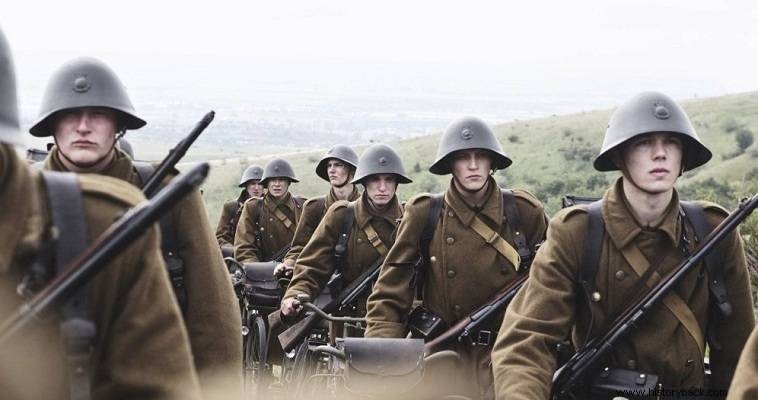
The small kingdom of Denmark has a military tradition inversely proportional to its size. However, during the Second World War the army was, for political reasons, in its worst condition. German forces invaded Denmark on April 9, 1940.
The army, which the "progressive" government of the country had not allowed to carry out mobilization, found itself unprepared to face the armed invader with the minimal active forces at its disposal. Although the conflict lasted only a few hours, it was fought with courage and bravery by the Danes, who inflicted many times more casualties on the Germans than they themselves suffered.
Under the Defense Act of 1937, the Danish army extended only 14,550 men. Each year, 6,000 conscripts were called up for training in arms and served for 11 months. This force did not even cover the peaceful needs of the army and of course it had no hope against the Germans.
The country's government, relying on the non-aggression pact it signed with Hitler, refused to reinforce the army, as if it had no concrete examples of the value of Hitler's word. In 1940 the army had eight infantry regiments, two cavalry regiments, three artillery regiments, one anti-aircraft artillery regiment, one engineer regiment, one transport battalion, one transport battalion, services and four squadrons with a total of 52 "antique" aircraft.
In 1940 the army had eight infantry regiments, two cavalry regiments, three artillery regiments, one anti-aircraft artillery regiment, one engineer regiment, one transport battalion, one transport battalion, services and four squadrons with a total of 52 "antique" aircraft.
The infantry, which formed the core of the army, was organized into regiments of about 5,000 men each. Of the eight regiments one was a regiment of royal bodyguards, one regiment of cyclists and six of common infantry. The regiment had a staff, a headquarters company, which also included a transport section and an ammunition section, a relay platoon, an anti-aircraft platoon, a reconnaissance platoon, an engineer and medical platoon.
It also had an infantry support artillery company, three infantry battalions and a field battalion. Each infantry battalion fielded 1,469 men. It had a command company and four companies, each with 230 men. These companies were called light machine gun companies and their men were equipped with rifles and machine guns. The battalion also had a heavy weapons company, with a machine gun platoon, a mortar platoon and an anti-aircraft platoon. The Royal Guard Regiment had a similar composition, with minor differences.
The 6th Cyclist Infantry Regiment had a different composition. He fielded two battalions, each of 788 men, each with three companies of cyclists and one company of motorcyclists. It also had a heavy weapons company and two more enlisted battalions. Finally, the infantry also included the "Bornholm Force", named after the island of the same name, which consisted of seven enlisted infantry companies. Despite their name, however, the Infantry Pioneer Command also belonged to the infantry. This force consisted of two battalions, each 1,000 strong. Each battalion had three companies of cyclists, one company of motorcyclists and engineer elements.
Its mission was to guard the frontier and carry out destruction at selected points on the road network and elsewhere with the aim of slowing down an invasion. German invasion. This invasion took place at 04.15 in the morning of April 9, 1940. The attack was carried out by the German XXXI Army Corps, as part of Operation "Waswrubung".
The Germans invaded through the Jutland peninsula into Danish territory, while the 1st Parachute Regiment made a deep drop north of the Danish defense line. Although the head of the Danish army Lt. General Willem Prior had information and had asked the government to order conscription, he was not listened to.
Thus the burden of defense was borne mainly by the Pioneer Infantry Command, whose men defended themselves heroically under the conditions before being ordered by their government to lay down their arms. 16 Danish military personnel and some civilians were killed or injured in the clashes.
Several civilians were also killed or wounded resisting the Germans, who had 203 killed, wounded and captured. 16 German tanks and armored vehicles were also destroyed or damaged.
